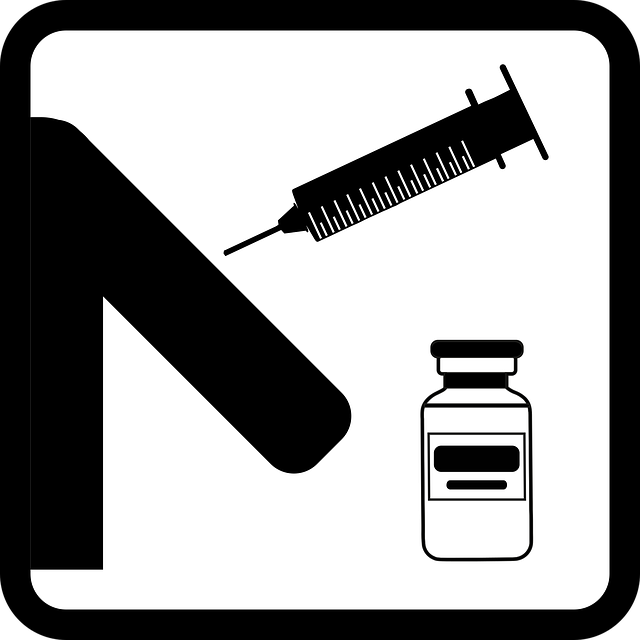Semaglutide's injectable form relies on convenient and precise delivery for successful treatment of type 2 diabetes and obesity. Patient adherence, driven by education, support systems, and digital tools, is crucial for optimal health outcomes. Simplifying dosing routines, using visual aids, and leveraging technology enhance adherence and improve treatment results. Engaging patients long-term through personalized care and remote monitoring contributes to better health outcomes.
Patient adherence to injections, especially with medications like semaglutide, is crucial for effective treatment. This article delves into various aspects of enhancing patient response to semaglutide injectables. We explore the significance of understanding the drug’s form, identifying barriers and facilitators of adherence, and the power of education. Additionally, we discuss strategies such as simplifying regimens, utilizing visual aids, and implementing digital tools for better tracking. Long-term engagement strategies ensure sustained patient success with semaglutide injectable therapy.
Understanding Semaglutide Injectable Form Importance

The effectiveness and success of treating various medical conditions with semaglutide greatly depend on a crucial factor: its injectable form. Understanding this aspect is essential for both healthcare providers and patients, as it directly impacts treatment adherence and outcomes. Semaglutide, when administered via injection, offers a convenient and precise method of delivering the medication, ensuring optimal blood levels for better control of conditions like type 2 diabetes or obesity.
The unique properties of the semaglutide injectable form allow for a consistent and controlled release, providing steady benefits throughout the body. This formulation is designed to mimic the natural hormone’s action, enabling effective weight management and metabolic regulation. By understanding the specific delivery method, patients can better adhere to their treatment plans, leading to improved health outcomes.
Patient Adherence: Barriers and Facilitators

Patient adherence plays a pivotal role in determining the success of treatment with semaglutide, an innovative injectable form of medication. Several barriers often impede patients from adhering to their injection regimens. These include practical challenges like forgetting doses, difficulty accessing healthcare facilities for refills, and cost considerations. Additionally, patient fears, such as anxiety related to injections or concerns about potential side effects, can significantly influence adherence.
However, various facilitators can encourage better compliance. Healthcare providers can offer clear instructions, educate patients on the importance of consistent dosing, and provide support systems to address fears. Making semaglutide accessible through convenient refill options, patient-friendly packaging, and affordable healthcare policies can also enhance adherence. Furthermore, integrating injection techniques into patient education sessions and utilizing reminder tools like mobile apps have proven effective in promoting timely and correct medication administration.
The Role of Education in Injection Compliance

Patient education plays a pivotal role in enhancing adherence and response to injections, especially with medications like semaglutide in its injectable form. Healthcare providers must spend ample time explaining the purpose and benefits of the injection regimen, addressing any fears or misconceptions patients might have about needles and injections. By offering clear, comprehensive information tailored to individual patient understanding, healthcare professionals empower them to actively participate in their care.
This educational aspect involves demonstrating the correct technique for self-administration, highlighting potential side effects and when they may occur, as well as emphasizing the importance of consistent dosing intervals. Patients who feel involved in their treatment process are more likely to adhere to prescribed injection schedules, thereby reaping the full therapeutic benefits of medications like semaglutide.
Simplifying Regimens for Better Patient Response

Simplifying patient regimens, particularly for chronic conditions managed with injections like semaglutide’s injectable form, can significantly enhance adherence and treatment outcomes. Complex or burdensome dosing schedules often lead to non-adherence, as patients may struggle to remember multiple medications at different times throughout the day. By streamlining these routines, healthcare providers can improve patient response. This might involve adjusting injection frequencies, using autoinjectors or pre-filled syringes, or incorporating visual aids and educational materials to reinforce proper administration techniques.
These strategies not only make treatment more convenient but also foster a sense of autonomy and empowerment among patients. Better understanding and easier management of their condition can encourage them to stick to their medication regimens, ultimately leading to improved health outcomes.
Visual Aids and Supportive Care for Injection Adherence

Visual aids and supportive care play a significant role in enhancing patient adherence to injections, especially with medications like semaglutide in its injectable form. Visual tools such as step-by-step instructional videos or diagrams can guide patients through each phase of the injection process, ensuring they understand proper technique and reducing anxiety associated with self-administration. These resources are particularly beneficial for complex medications where even minor errors can impact effectiveness.
Supportive care measures, including one-on-one training sessions, peer support groups, and regular reminders, create a safety net for patients. Healthcare providers can offer personalized guidance, addressing individual concerns and barriers to adherence. Additionally, providing written materials or digital resources that reinforce proper injection techniques and storage instructions further aids patient understanding and promotes consistent medication use, leading to improved health outcomes.
Digital Tools Enhancing Semaglutide Therapy Tracking

In recent years, digital tools have emerged as powerful allies in enhancing patient adherence and response to injections, particularly in the case of semaglutide, an innovative injectable form of medication. These tools offer a range of features that simplify the management of diabetes and other chronic conditions. Mobile apps designed for semaglutide therapy tracking allow patients to record their injection schedules, monitor side effects, and even set reminders for future doses. This level of personalization and convenience encourages better patient engagement and adherence to treatment plans.
Additionally, digital platforms facilitate communication between patients and healthcare providers. Features like secure messaging and automated updates enable quick responses to queries and provide timely support. Such advancements not only ensure that patients receive consistent care but also foster a sense of empowerment, encouraging them to take an active role in managing their health effectively.
Long-term Patient Engagement Strategies for Success

Ensuring long-term patient engagement is vital for successful outcomes, especially with chronic conditions managed through injections like the semaglutide injectable form. Health care providers should consider personalized education plans to empower patients and foster understanding of their treatment regimens. Regular follow-up appointments, along with accessible resources and support networks, can significantly improve patient adherence.
Additionally, leveraging technology for remote monitoring and digital education platforms can enhance patient engagement. Text reminders, mobile apps, and virtual consultations not only help patients stay on track but also facilitate timely intervention for any concerns or issues related to their semaglutide injections. This multi-faceted approach ensures a supportive environment, ultimately leading to better health outcomes.
